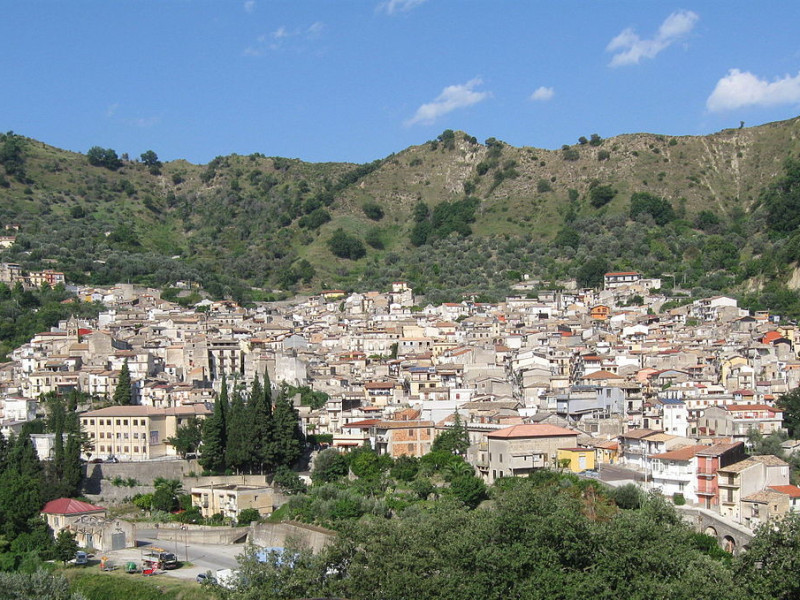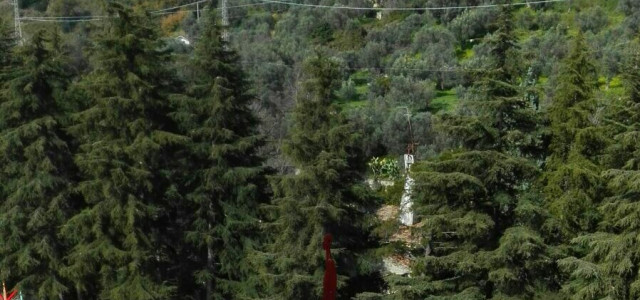Mammola
Mammola is a comune (municipality) in the Province of Reggio Calabria in the Italian region Calabria, located about 70 kilometres (43 mi) southwest of Catanzaro and about 60 kilometres (37 mi) northeast of Reggio Calabria. As of 31 December 2004, it had a population of 3,334 and an area of 80.5 square kilometres (31.1 sq mi). Mammola borders the following municipalities: Agnana Calabra, Canolo, Cinquefrondi, Galatro, Giffone, Grotteria, San Giorgio Morgeto, Siderno. Mammola is a comune (municipality) in the Province of Reggio Calabria in the Italian region Calabria, located about 70 kilometres (43 mi) southwest of Catanzaro and about 60 kilometres (37 mi) northeast of Reggio Calabria. Mammola is positioned on the margins of the territory of the Aspromonte National Park, not too distant from the Southern Ionian coasts of Calabria. Some scholars identified it with the ancient Magno-Greek colony of Malea or Melea (5th century BC), as remembered by the historian and Greek general, Tucidide. It is more likely that the present day centre rose up on the ruins of the ancient Greek colony during the Byzantine era (10th century) following Saracen raids which pushed its inhabitants from the coast towards more secure inland areas. Here there were definitely already Basilian monk communities which were active in Calabria since the 13th century. In particular, it was San Nicodemo who was active (900-990), when he founded the homonymous monastery on Mount Cellerano. The village appeared in a document of the S. Nicodemo Monastery dating back to the 12th century by the name of Mammula, therefore tying its history to that of neighbouring Grotteria. Under the Angioinians it was assigned to the following families: Giovanni Ruffu (1283), Lauria (1303), Sebrasio (1309), del Prato (until 1342) and the Luna (until 1400). Under the Aragonese it was entrusted to the following families: Caracciolo (until 1455), Correale (until 1501), Carafa (until 1540), under whom Mammola became a baronage. These families were then followed by the: Galiego, Loffredo (until 1573), Ruffo (until 1574), de Pazzi (until 1577), Aragona d'Ayerbe (until 1592), Joppolo (until 1677) and the Spina (until 1735). Under the Bourbons, the following families ascended to power: Barreca (until 1748), De Gregorio, who ruled until the subversion of feudalism (1806). Mammola and its inhabitants adhered to the Carbonari movements (1820–21), the Risorgimento (1848) and the Unitarians (1860). Following the unification into the Reign of Italy (1861), Mammola experienced the brigandage phenomenon and that of emigration across the ocean ('900). A visit to Mammola is very evocative, given the Medieval structure of the village and the rich architectonic and artistic patrimony that it preserves. There are numerous nobiliary buildings to admire while walking through the alleyways, which suddenly give panoramic glimpses of the surrounding hills. The churches are remarkable for their numbers and artistic value, among which we would like to point out: the S. Nicola of Bari Matrix Church and the Annunziata Church with its beautiful façade. Outside Mammola one can visit the San Biagio Abbey dating back to the 10th century. In the interior of the Aspromonte National Park, apart from numerous naturalistic excursions, you must visit the Shrine of St. Nicodemus, in the highlands of Limina, the place where the Saint lived inhabited by a Monaco and the Santa Barbara Museum Park a Museum of Modern Art contemporary, founded by internationally renowned Nik Spatari pupil of Le Corbusier and friend of Picasso, Dali, Miro' and so on.. Notable people Famous people of international fame: Sal Albanese, a former New York City Councilman and candidate for Mayor elections 2013. Nick Mancuso, a world famous actor. Nik Spatari, internationally renowned artist and sculptor, creator and producer of the Museum Park Santa Barbara.. Nik Romeo diplomat. Nicodemo Rinaldis, world-renowned photographer. Roberto Raschellà, writer, poet, novelist, translator of numerous books Italian-Spanish. Demographic evolution Town partnerships Mezdra, BUL February 4, 2007 Saint-Clair-du-Rhône (Francia) May 17, 2010 References ^ a b All demographics and other statistics from the Italian statistical institute (Istat) External links www.comunemammola.it/


